Chili - The Spice of Life
Chili, a beloved spice used worldwide, is a versatile ingredient that adds depth, flavor, and heat to any dish. Known for its rich, spicy kick, chili peppers come in various forms, including fresh, dried, powdered, and as chili sauce or oil. Whether you're an adventurous cook or someone who enjoys adding a touch of heat to your meals, chili products offer the perfect solution.
Fresh Chili Peppers are vibrant, juicy, and packed with heat. From mild to extremely spicy varieties, fresh chilies can be sliced, diced, or used whole to infuse dishes with their pungent aroma. Great for stir-fries, salsas, and curries, fresh chilies add a fresh and bold flavor to your meals.
Dried Chili Peppers are perfect for slow-cooking and flavor extraction. When dried, chilies intensify their heat and smokiness. You can use them whole, ground into chili powder, or rehydrate them to create sauces and soups with a complex depth of flavor.
Chili Powder is a staple in kitchens around the world. A blend of dried chili peppers and other spices like cumin and garlic, chili powder adds a punch of heat and a savory aroma to dishes. Perfect for seasoning meats, soups, stews, and even grilled vegetables, chili powder offers convenience without compromising on flavor.
Chili Sauces and Oils are excellent for those who prefer a ready-to-use option. These products combine chili with ingredients like garlic, vinegar, or sesame oil to create flavorful sauces and oils that elevate your dishes instantly. Whether you like it sweet, tangy, or fiery, chili sauces and oils are perfect for dipping, marinating, or adding to your favorite foods.
Enhance your culinary creations with chili – a bold, flavorful ingredient that brings spice and excitement to every meal!
-
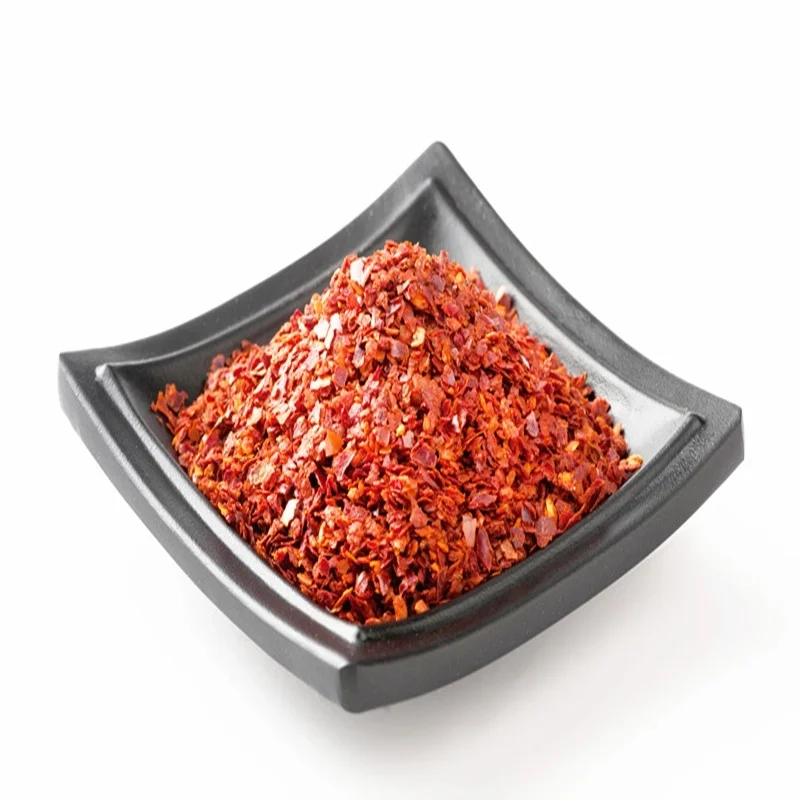
Gochugaru
2000-6000SHUGochugaru ena ke ea tlhaho ea 100% ntle le li-additives, sehlahisoa sa rona se loketse ho kha, haholo-holo litlolo tse tsebahalang tsa Korean kimchi. E ts'eptjoa ke mefuta e mengata ea kimchi ea Korea, gochugaru ea rona e netefatsa bonnete le ho ntlafatsa litatso tsa setso. Ntlafatsa boiphihlelo ba hau ba ho khetha ka Gochugaru ea rona ea pele - khetho e hloekileng bakeng sa ba batlang boleng bo sa tsitsang ba ho theha lijana tse khahlehang le tsa 'nete tsa Korea. Tseba moelelo oa moetlo oa lijo tsa Korea ka gochugaru ea rona e ikhethang, moo bohloeki bo kopanang le lefa la bokhabane la ho khetha.
-
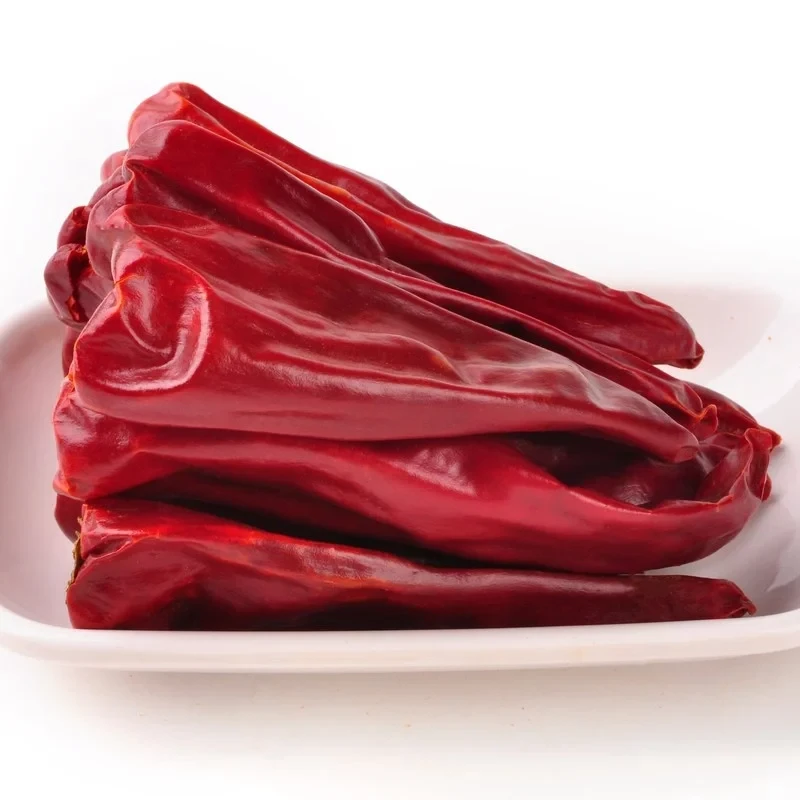
Yidu Chili e omisitsoeng
3000-5000SHUChili ena e omisitsoeng ea Yidu e khethoa ka hloko 'me e omisoa ke letsatsi, e boloka litšoaneleho tsa bona tsa tlhaho le mekhoa ea setso ea tlhahiso, e leng se etsang hore ho be le motsoako oa pele oa culinary. Ke 100% ea tlhaho ntle le li-additives, e nang le 'mala o mofubelu o khanyang, tatso e ikhethang, spiciness e tsitsitseng, le boleng bo ikhethang. E sebetsa e le mokhoa o mong o phetseng hantle, o lumellang bareki ho fetola boemo ba linoko lijana tsa bona ho latela khetho ea bona. Litšobotsi tse ikhethang tsa chili ea rona ea Yidu e omisitsoeng li etsa hore e be khetho e fapaneng le e ipiletsang bakeng sa ba chesehelang ho pheha.
-
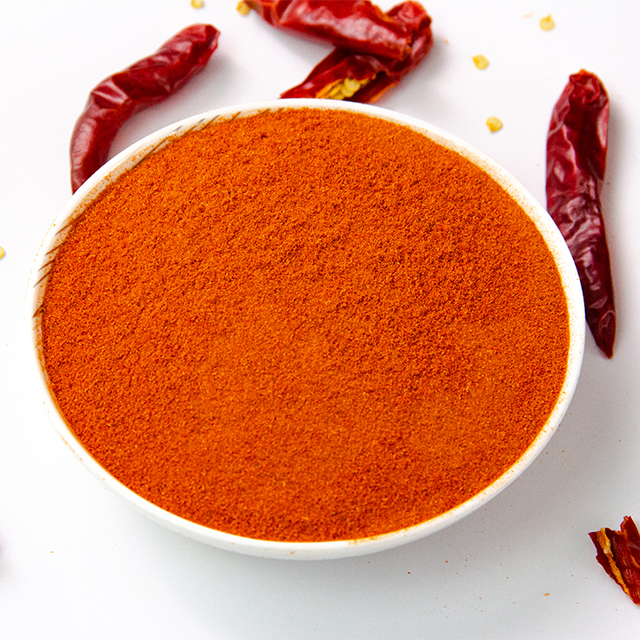
Chili phofo-10,000-15,000SHU
10,000-1,5000SHUPhofo ena ea chili ke linoko tsa boleng bo holimo tse eketsang tatso le mocheso lijanang tse fapaneng. Ho tsoa ho pepere e ntle ka ho fetisisa, sehlahisoa sa rona se entsoe ka nepo ho fihlela maemo a holimo a boleng le tatso.
-
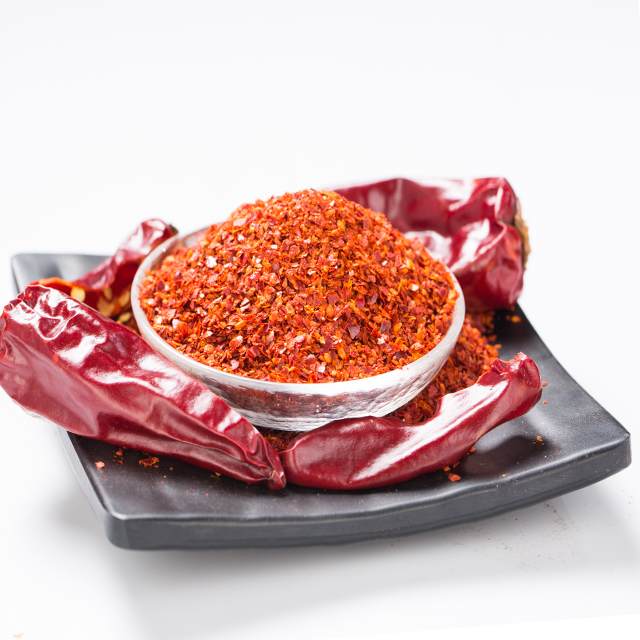
Paprika e monate e sithabetseng
Eseng linokoPaprika ena e monate e sithabetseng e hloekile ka 100%, ha e na matheba, hlobo le Sudan Red. Sehlahisoa sa rona se tiisa bohloeki le bokhabane, se netefatsa ho eketsoa ha tatso lijana tsa hau. Ha e na likoli le taolo e thata ea boleng, e eme e le khetho e tšepahalang bakeng sa batho ba chesehelang ho pheha. Ntlafatsa lintho tseo u li bōpileng ka paprika ea rona e monate ea premium e pshatlehileng, e fana ka boleng bo ke keng ba bapisoa le tlatsetso e hlakileng, e se nang letheba ho litlolo tseo u li ratang. Tšepa ho hloeka ha sehlahisoa sa rona bakeng sa boiphihlelo bo monate le bo monate ba ho pheha.
-
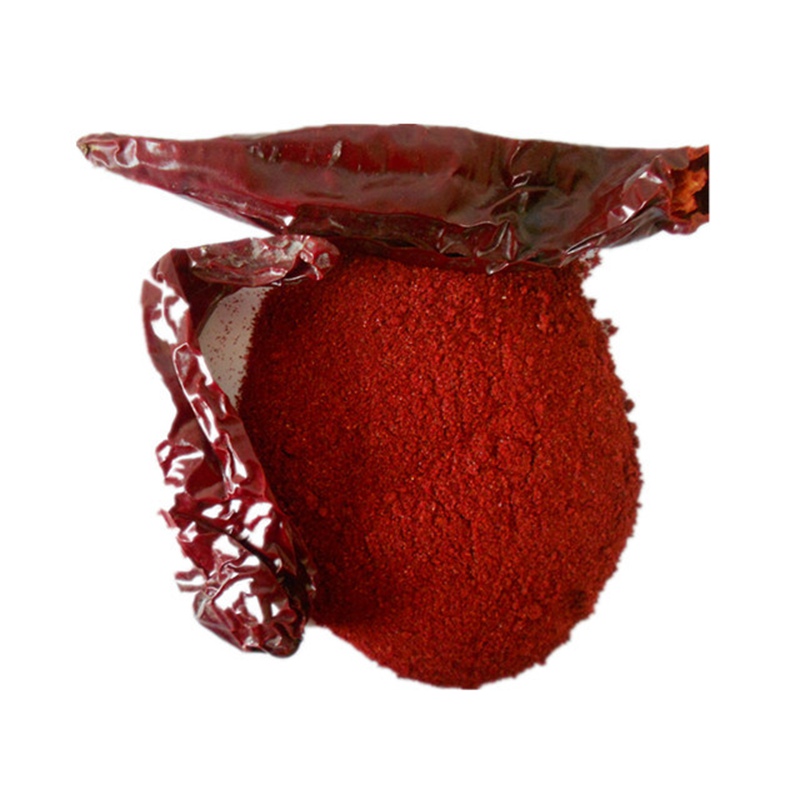
Phofo e monate ea paprika
Eseng linokoPhofo ena e monate ea paprika ke 100% ea tlhaho ntle le li-additives, e nang le 'mala o mofubelu o khanyang, tatso e ikhethang le boleng bo ikhethang. Ke setlolo se se nang linoko se ka sebelisoang ho ntlafatsa 'mala oa lijana, ho etsa hore li khahlehe. Litšobotsi tse ikhethang tsa phofo ea rona e monate ea paprika li etsa hore e be khetho e fapaneng le e ipiletsang bakeng sa ba chesehelang ho pheha.
Phofo ea rona e monate ea paprika e fana ka likhetho tseo u ka li khethang bakeng sa mebala e fapaneng, le ho paka. re ikemiselitse ho fana ka litlhoko tse fapaneng tsa ho itlhophisa.
-
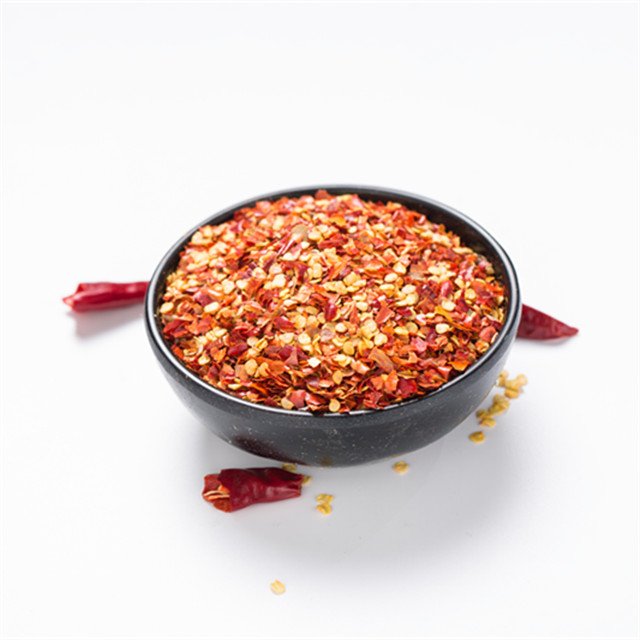
chili e sithabetseng-40,000-50,000SHU
40,000-50,000SHUFeme ea rona ke setsi sa boqapi ba linoko, se fana ka mefuta e fapaneng ea lihlahisoa, ho kenyeletsoa pepere e khubelu e sitsoeng, phofo ea chili, chilisi e omisitsoeng, lilae tsa chili le oli ea chili. Sehlahisoa sa rona se pharalletseng se fana ka litlhoko tse fapaneng tsa phepelo, ho tloha ho kenyelletsa li-pizza le pastas ho kenya litlolo tse monate ka har'a sechu le sopho. Sehlahisoa se seng le se seng se pokellong ea rona se fumane setifikeiti sa maemo a holimo sa EU, se pakang boitlamo ba rona bo sa thekeseleng ba boleng. Ntlafatsa lintho tseo u li qapileng ka linoko tsa rona tsa boleng bo holimo, tse etselitsoeng ho tenyetseha le ho nepahala, ho netefatsa boiphihlelo bo monate le bo monate sebakeng se seng le se seng sa kichineng.
-
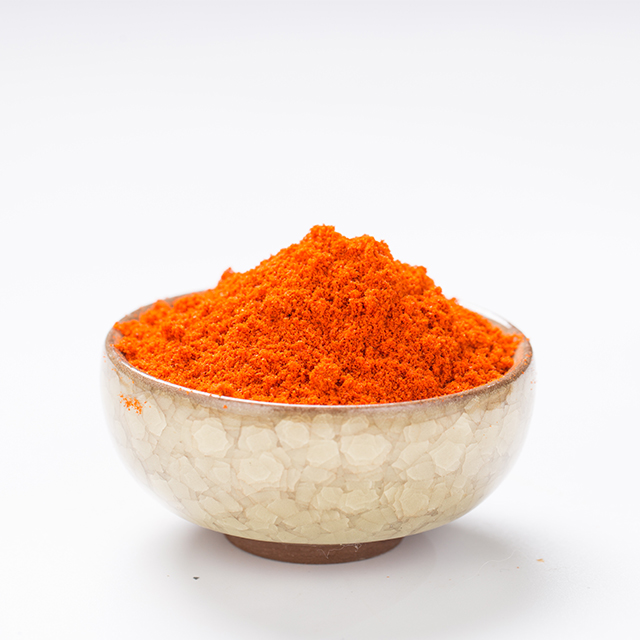
phofo ea chili -600,000SHU
60,0000SHUPhofo ena ea chilisi ke ea tlhaho ea 100% ntle le lisebelisoa, e na le 'mala o mofubelu o khanyang, tatso e ikhethang, linoko tse tsitsitseng, le boleng bo ikhethang. E sebetsa e le mokhoa o mong o phetseng hantle, o lumellang bareki ho fetola boemo ba linoko lijana tsa bona ho latela khetho ea bona. Litšobotsi tse ikhethang tsa phofo ea rona ea chili li etsa hore e be khetho e feto-fetohang le e khahlang bakeng sa ba chesehelang ho pheha.
Phofo ea rona ea chili e fana ka likhetho tseo u ka li khethang bakeng sa maemo a fapaneng a linoko, mebala le sephutheloana. re ikemiselitse ho fana ka litlhoko tse fapaneng tsa ho itlhophisa.
-
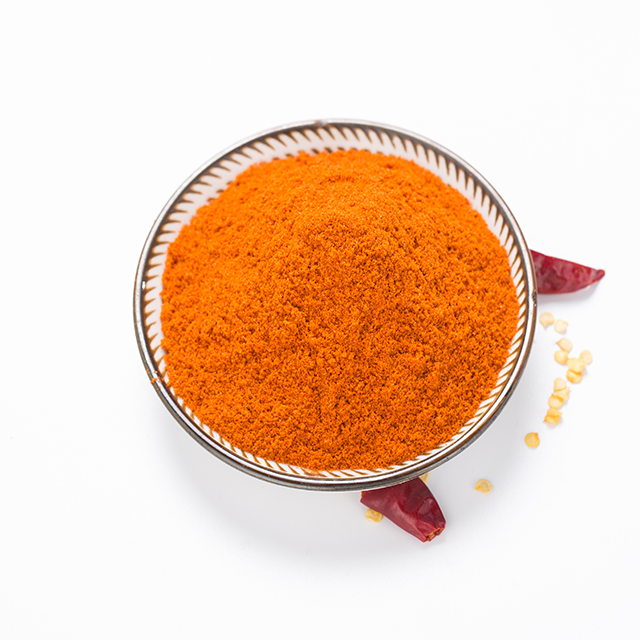
phofo ea chili-70,000-80,000SHU
70,000-80,000SHUPhofo ena ea chilisi e tumme ka boleng ba eona ba maemo a holimo, e hloekile ebile e se na li-additives. Re motlotlo ka ho fana ka sehlahisoa se fetang maemo a holimo, re fumana thoriso ka ho romelloa kantle ho naha ho ea United States, European Union le linaha tse ling. Khetha phofo ea rona ea chili bakeng sa boiphihlelo bo monate ba ho pheha, bo khetholloang ka tatso e ikhethang le boitlamo ba boleng bo re entseng re le barekisi ba tšepahalang limmarakeng tsa lefats'e.
-
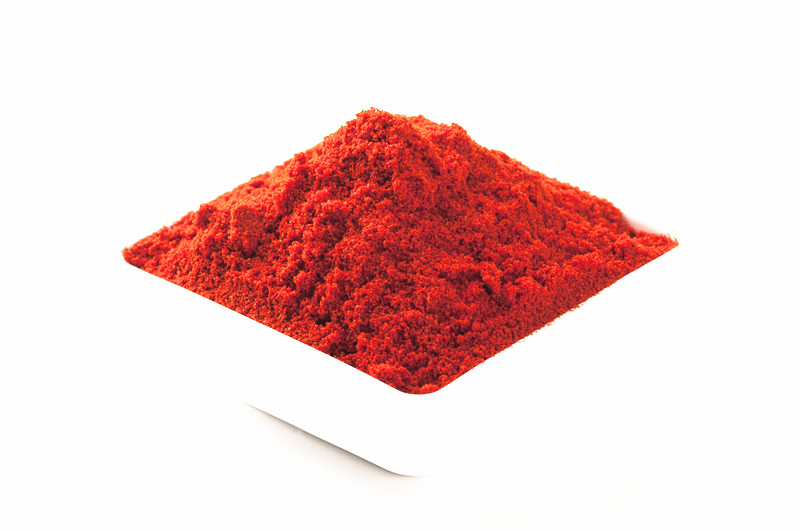
phofo ea chili-50,000SHU-60,000SHU
50,000-60,000SHUPhofo ena ea chili e hlahella e le khetho ea pele - e hloekileng, e sa kenyelletsoeng, 'me ha e na gluten. Ho tsoa ho pepere e monate ka ho fetesisa, sehlahisoa sa rona se netefatsa boiphihlelo ba 'nete ba spice. E lokolohile ho tsoa ho li-additives le gluten, e fana ka maikutlo a tlhaho le a hahang ho liqapi tsa hau tsa culinary. Khetha phofo ea rona ea chili bakeng sa tatso e hloekileng le papali e phetseng hantle ea ho pheha!
What Is The Trick To A Good Chili?
Chili, a beloved spice used worldwide, is a versatile ingredient that adds depth, flavor, and heat to any dish. Known for its rich, spicy kick, chili peppers come in various forms, including fresh, dried, powdered, and as chili sauce or oil. Whether you're an adventurous cook or someone who enjoys adding a touch of heat to your meals, chili products offer the perfect solution.
Fresh Chili Peppers are vibrant, juicy, and packed with heat. From mild to extremely spicy varieties, fresh chilies can be sliced, diced, or used whole to infuse dishes with their pungent aroma. Great for stir-fries, salsas, and curries, fresh chilies add a fresh and bold flavor to your meals.
Dried Chili Peppers are perfect for slow-cooking and flavor extraction. When dried, chilies intensify their heat and smokiness. You can use them whole, ground into chili powder, or rehydrate them to create sauces and soups with a complex depth of flavor.
Chili Powder is a staple in kitchens around the world. A blend of dried chili peppers and other spices like cumin and garlic, chili powder adds a punch of heat and a savory aroma to dishes. Perfect for seasoning meats, soups, stews, and even grilled vegetables, chili powder offers convenience without compromising on flavor.
Chili Sauces and Oils are excellent for those who prefer a ready-to-use option. These products combine chili with ingredients like garlic, vinegar, or sesame oil to create flavorful sauces and oils that elevate your dishes instantly. Whether you like it sweet, tangy, or fiery, chili sauces and oils are perfect for dipping, marinating, or adding to your favorite foods.
Enhance your culinary creations with chili a bold, flavorful ingredient that brings spice and excitement to every meal!
Why Are Peppers Called Chili?
The term "chili" is often used to refer to various types of hot peppers, but its origin and usage are a bit more complex. Here’s why peppers are called "chili":
1.Etymology from Nahuatl (Aztec language):
The word "chili" comes from the Nahuatl language, which was spoken by the Aztecs and other indigenous peoples in Mesoamerica. In Nahuatl, the word for pepper is "ch? lli". The Aztecs and other native groups in Central and South America cultivated and used chili peppers long before Europeans arrived, and they were integral to their cuisine.
When Spanish explorers encountered these peppers in the Americas in the 15th and 16th centuries, they adopted the Nahuatl word "ch? lli" to describe them. The term eventually made its way into other languages, including English, where it became commonly used.
2. Naming Confusion and Global Spread:
The word "chili" is used differently around the world. In many places, "chili" refers to the fruit of the Capsicum plant, which can be used fresh, dried, or powdered to add heat to food. However, when used in the context of chili con carne (the famous spicy stew), the name "chili" specifically refers to the dish made with ground meat, chilies, beans, tomatoes, and spices.
In the U.S. and many English-speaking countries, the term "chili" has become synonymous with hot peppers, especially Capsicum annuum, which includes common varieties like jalapenos, serranos, and cayennes. However, in other parts of the world, like India and some parts of Asia, the term "chili" often refers to the spicier varieties of Capsicum that are commonly used in their cuisines.
3. "Chili" vs. "Chili Pepper":
In the 17th century, when Christopher Columbus brought the peppers back to Europe, they were initially thought to be a type of pepper (which they resemble in taste and appearance). The name “pepper” had already been used to describe the spicy fruit of the Piper nigrum plant (black pepper), and this led to the widespread use of the term "pepper" for the Capsicum family, despite them being botanically unrelated. Over time, the term "chili pepper" was adopted in many languages to differentiate the spicy peppers from black pepper.
In this sense, "chili" became shorthand for chili pepper, the pepper that imparts heat, especially from the Capsicum family, which includes many varieties of peppers that vary in heat intensity.
4. Cultural Influence and Usage:
The spread of chili peppers around the world, particularly after the Columbian Exchange (which was the exchange of plants, animals, and cultures between the Americas and the Old World), played a significant role in shaping global cuisine. As chili peppers became more commonly used in a wide range of dishes, the name “chili” was often applied to dishes and recipes that incorporated these peppers, such as chili con carne, chili oil, and chili sauce.
In summary, "chili" is derived from the Nahuatl word for pepper, "ch? lli", and has evolved in usage due to its widespread adoption in cuisines around the world. It’s used to refer to both the pepper itself and the dishes made with it, particularly those that are spicy and contain peppers.








